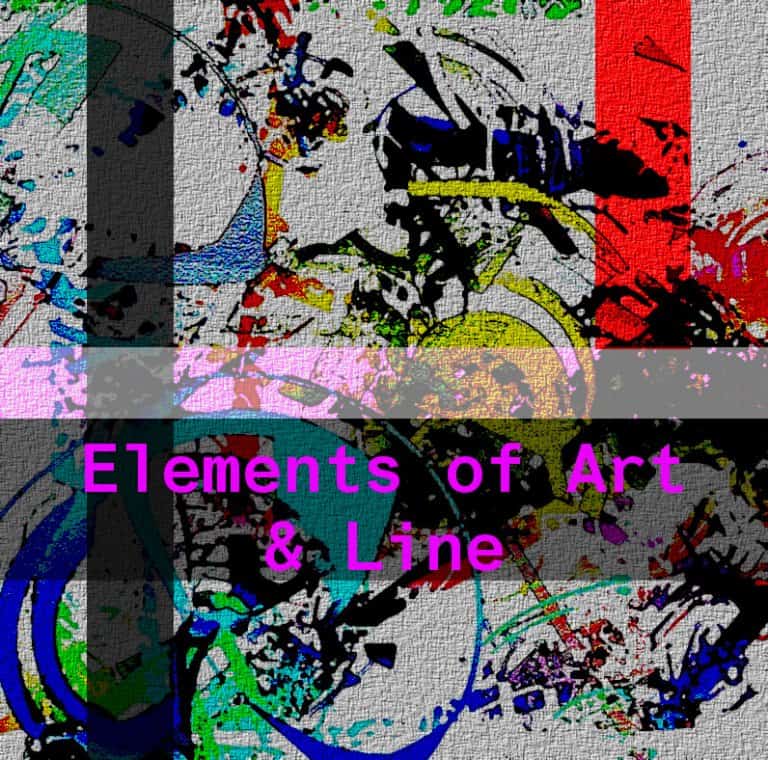Elements of Art & Line - Art Education for the Home School

This is the first post in a short series of guest posts by April Boston on basic art education for homeschoolers. Hopefully, these lessons can give you some basic ideas for starting out and learning on your own.
The Elements of Art and the Line
 Covering all of the subjects taught in a traditional school can be a daunting task for the homeschooling parent. Obviously, the big core subjects like math, English, and science bring with them a wealth of homeschool literature, lessons, and activities available for purchase. However, other subjects, without such available resources, can easily fall through the cracks. Art is one such subject.
Covering all of the subjects taught in a traditional school can be a daunting task for the homeschooling parent. Obviously, the big core subjects like math, English, and science bring with them a wealth of homeschool literature, lessons, and activities available for purchase. However, other subjects, without such available resources, can easily fall through the cracks. Art is one such subject.
Being an art educator myself, it pains me to see what could be valuable and meaningful lessons learned through art turned into simple craft classes by my homeschooling friends. According to them, they do not want to simply make a traced hand turkey, they just don't have the resources to teach meaningful and culturally relevant art lesson. So, I am here to do something about that. Below you will find the first of, hopefully, many simple but effective art education lessons appropriate for the home school environment.
To begin using art as an educational tool as opposed to just a fun class, you must first know the building blocks of the subject. These building blocks, known as the elements of art, are the pieces that make up every artwork in existence. A good analogy is the elements of art are like words in a sentence. Depending on which words you choose and what order you put them in, you can create many different sentences with many different meanings. So is the case with the elements. Depending on which elements you chose and how you put them together, you can create endless different artworks with endless different meanings. The elements of art are line, shape, form, texture, color, value, and space. All art education should begin with this foundation. Below are two lessons with which to get started: an intro to the elements of art and the first element, line. In subsequent articles, I will cover the remaining art elements two at a time with lessons that teach and visually reinforce each term.
ELEMENTS OF ART
Definition -- the basic components or building blocks of every artwork. They are line, shape, form, color, value, texture and space.
Prediction Activity - Fold a sheet of paper in three columns. Title the first column Elements of Art and write the 7 elements. Title the second column my prediction and the third definition. Take a few minutes now to predict what you think the definition for each element is. Record your prediction in the appropriate column by each element. As we learn the elements, go back to this learning log and write the correct book definition in the appropriate column.
LINE
Definition -- the path followed by a moving point; a mark made by a pointed object
Bell Ringer (a quick question/pre-assessment at the beginning of the lesson to get your student thinking) - Draw and label as many different kinds of lines as you can think of.
Example answers could include: curved, wavy, straight, diagonal, thin, thick, short, long, dotted, dashed, etc.
Art Analysis - Supply your student with examples of famous artworks from the internet or resource books. Have your student look for several different artworks that demonstrate several of the lines listed in his bell ringer. Discuss that nearly every artwork in existence has line in it.
Studio Project - Creative Line Drawing
This project will encourage creativity, problem-solving, and artistic skill while teaching the concept of line in art. Give your student a large sheet of drawing paper. Using a black marker, make a large scribbled line in the center. Have your student then turn the paper around looking at the line from all directions until the line looks like something. Challenge your student to create a drawing that incorporates the entire line in some way. The drawing should fill the page (add a background) and should be colored with good craftsmanship. Also, you may want to say the following are off limits as they are a bit too easy -- snakes, worms, strings, hoses, etc.
Good luck with the intro lesson and your first element, line. Next up will be shape and form.







Leave a Reply